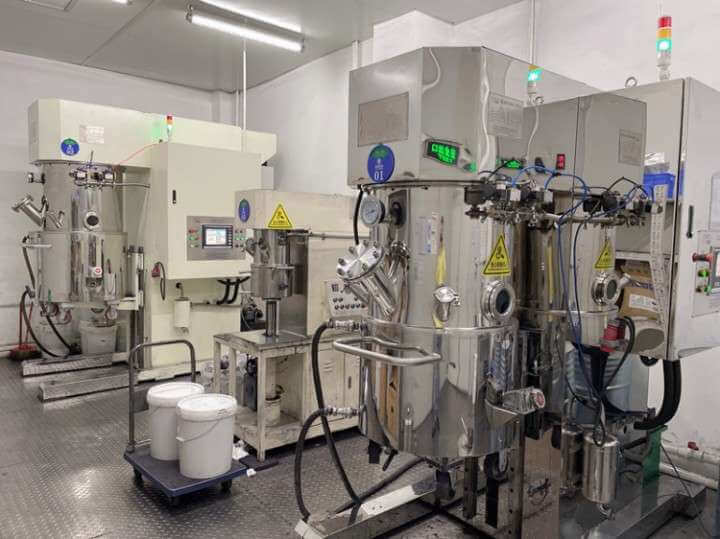Site Blog
Ligne de machines de fabrication de production de cellules cylindriques automatiques
fabrication et équipement de laboratoire de batterie de Li-ion 18650
Organigramme de la pile bouton au lithium-ion et liste des machines
fabrication et équipement de laboratoire de batterie de poche de li-ion
dec 2016 usa client acceptation d'usine de l'empileuse automatique
Contactez-nous
- Si vous avez des questions, veuillez communiquer avec nous, toutes les questions recevront une réponse
- Messagerie : David@tmaxcn.com
- Messagerie : Davidtmaxcn@gmail.com
- Ajouter : No. 39, Xinchang Road, Xinyang, Haicang Dist., Xiamen, Fujian, China (Mainland)
produits chauds
Prismatic cell laboratory plant is essential for research, development, and testing of prismatic cells in a controlled laboratory setting. Here are some common types of laboratory equipment used in prismatic cell research:
Electrode Preparation Equipment:
Coating Machines: Used to apply electrode materials onto current collectors with precise thickness and uniformity.
Slurry Mixers: Utilized to prepare the electrode slurry by mixing active materials, binders, and solvents.
Doctor Blades: Used to spread the electrode slurry evenly onto the current collector surface.
Assembly and Testing Equipment:
Cell Assembly Stations: Provide a controlled environment for assembling prismatic cells, including electrode stacking, separator placement, and electrolyte filling.
Die Cutting Machines: Used to cut prismatic-shaped electrodes and separators with accuracy.
Calenders and Roll Presses: Applied to compress the electrode stack and improve the adhesion between layers.
Vacuum Chambers: Enable degassing of Prismatic cell manufacturing line
to remove trapped air and impurities before sealing.
Coin Cell Assembly Equipment: Utilized for prototyping and initial testing of prismatic cells in a smaller form factor.
Testing and Characterization Equipment:
Battery Cyclers: Used to perform charge-discharge cycles on prismatic cells to evaluate their performance, capacity, and cycling stability.
Electrochemical Impedance Spectroscopy (EIS) Analyzers: Measure the impedance response of prismatic cells, providing insights into their electrochemical behavior.
Thermal Chambers: Provide temperature control for testing prismatic cells under different thermal conditions.
Safety Testing Equipment: Includes devices for evaluating the safety aspects of prismatic cells, such as thermal runaway and short circuit tests.
Analytical Instruments:
Scanning Electron Microscope (SEM): Enables high-resolution imaging and analysis of electrode structures and morphologies.
X-ray Diffraction (XRD) Spectrometers: Used to examine crystallographic structures and analyze electrode materials.
Energy Dispersive X-ray Spectroscopy (EDS): Provides elemental analysis of electrode materials and interfaces.
Fourier Transform Infrared (FTIR) Spectrometers: Help identify functional groups and analyze electrolyte composition.
Environmental Control Equipment:
Glove Boxes: Provide an oxygen- and moisture-free environment for handling and assembling prismatic cells with sensitive materials.
Temperature and Humidity Chambers: Allow controlled testing of prismatic cells under different environmental conditions.
These laboratory equipment types may vary based on the specific research requirements and resources available. Prismatic cell scale plant is crucial for investigating cell performance, optimizing electrode designs, and gaining insights into the electrochemical behavior of prismatic cells.
 ru
ru English
English











 +86 13174506016
+86 13174506016 David@tmaxcn.com
David@tmaxcn.com

